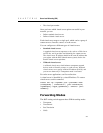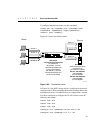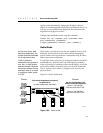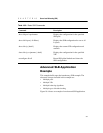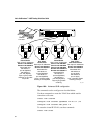
C H A P T E R 18 Server Load Balancing (SLB)
357
• Subnet-Route - If your network configuration requires that the
VIPs be propagated through a routing protocol by the switch, you
need to create a loopback VLAN with the VIP(s) being valid
members of the loopback VLAN’s subnet. When a routing
protocol is enabled, the subnet containing the VIPs is propagated
through the network.
Balancing Methods
A load balancing method defines, in part, the logic that the 480T
routing switch uses to determine which node should receive a
connection hosted by a particular virtual server. Individual load
balancing methods take into account one or more dynamic factors,
such as current connection count.
Because each application of SLB is unique, node performance
depends on a number of different factors. We recommend that you
experiment with different load balancing methods, and choose the
one that offers the best performance in your particular environment.
The 480T routing switch supports these load balancing methods:
• Round-robin
• Ratio
• Least connections
• Priority
Round-Robin
The default load balancing method is round-robin, and it simply
passes each new connection request to the next server in line,
eventually distributing connections evenly across the array of
devices being load balanced. Round-robin works well in most
configurations, especially if the equipment that you are load
balancing is roughly equal in processing speed and memory.
To configure round-robin, use this command:
configure slb pool <poolname> lb-method round-robin



